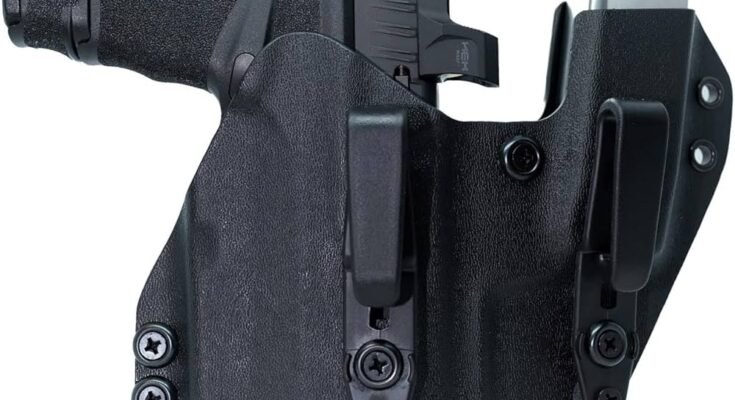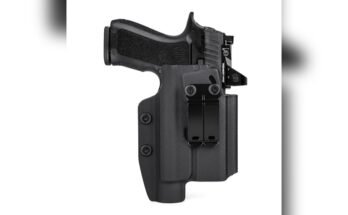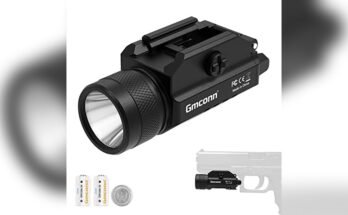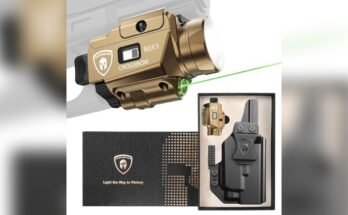You want a holster that just works. I get it. I’ve fit dozens of handguns for students and clients, and I’ve learned a simple truth: not every holster will fit your gun. The right choice depends on the firearm, the holster design, and how you plan to carry. In this guide, I’ll break down what matters, why fit is more than size, and how to pick a holster you’ll trust. If you’ve ever asked, will any holster fit my gun?, the short answer is no. But there is a holster that will fit your gun and your life.

Why One-Size-Fits-All Is A Myth
Most guns are unique in small ways. Slides vary. Triggers sit at different angles. Safeties, optics, and lights change the profile. A holster shaped for one gun often cannot secure another.
Some “universal” holsters work in a pinch. But they tend to trade retention, safety, and draw consistency for flexibility. That can slow your draw and increase risk. When it comes to daily carry, fit is a safety feature, not a luxury.
From years on the range, I’ve seen this play out. Loose fit leads to bad draws and printing. Tight fit can drag on the front sight or grab the optic. The sweet spot is a holster molded for your exact gun and setup.

Holster Types And What They’re Best For
The style you pick changes comfort, speed, and concealment. Here is a quick guide.
- Kydex: Rigid, durable, great retention and fast draw. Ideal for EDC and training.
- Leather: Comfortable and classic. Breaks in over time. Retention can soften.
- Hybrid: Kydex shell with soft backing. Good balance of comfort and structure.
- Nylon/Soft: Light and cheap. Often “universal.” Less retention and consistency.
- Duty/Retention Holsters: Often Level II or III with active locks. Built for duty carry.
- Pocket/Ankle: Niche carry. Works best with small, lightweight guns.
- Shoulder: Useful when seated often or with jackets. Needs careful fit to avoid muzzle sweep.
Each type needs to match your gun’s shape, weight, and your daily routine. The wrong type can feel like wearing hiking boots to a beach.
Key Fit Factors You Must Check
Focus on the core elements that decide whether a holster will work for your exact firearm.
- Make, model, and generation: A Glock 19 and a Glock 19 with rail changes can differ.
- Barrel and slide length: A longer slide can bottom out or poke through.
- Trigger guard coverage: Must fully cover the trigger. No exceptions.
- Sights and optics: Tall sights, red dots, and suppressor-height sights need clearance.
- Lights and lasers: A weapon light changes the holster mold. You need a light-bearing holster for that exact light.
- Safeties and controls: External safeties, decockers, and oversized slide stops need room.
- Attachment method: Clip, loop, DCC clip, or belt slide must match your belt and clothing.
- Cant and ride height: Impacts concealment and draw stroke.
- Retention: Adjustable retention should click or hold firmly without crushing the frame.
If any of these do not match, pass on the holster. A near fit is still a misfit.
How To Test Holster Fit Like A Pro
Do a simple checklist at home before you carry.
- Unload your gun: Check chamber and mag well twice.
- Insert and remove: The holster should accept and release the gun smoothly.
- Listen and feel: Many Kydex holsters give a positive click on seating.
- Shake test: With gun holstered and unloaded, invert over a bed. It should not fall out.
- Draw test: Draw and reholster 20 times. No snagging on sights or optic.
- Clothing test: Try your normal clothes. Check for printing, hot spots, and ride height.
- Movement test: Sit, drive, and walk stairs. Comfort matters as much as retention.
- Trigger safety check: Press around the holster. You should not be able to move the trigger.
If it fails any step, do not carry it.
Common Mistakes To Avoid
Small choices can create big problems. Here are the pitfalls I see most.
- Buying “universal” when you carry daily: Good for storage, not for EDC.
- Ignoring light-bearing needs: If you add a light later, you need a new holster.
- Over-tight retention: It can slow your draw and wear your finish.
- Under-tight retention: The gun shifts, rattles, or falls out.
- Poor belt choice: A flimsy belt makes a great holster feel bad.
- Wrong ride and cant: Leads to printing, slow draw, and discomfort.
- Skipping dry practice: The best holster still needs reps to feel right.
Concealed Carry Versus Duty And Range Use
Your use case matters. Concealed carry needs comfort, concealment, and a clean draw. Duty use needs higher retention levels and rugged build. Range-only holsters can be more open for speed but may print or feel bulky in daily life.
- Concealed carry: IWB or appendix with claw or wedge helps reduce printing.
- Duty or open carry: Level II or III retention, sturdy mount, and fixed ride.
- Range training: OWB Kydex with good retention and easy reholster.
Match your holster to the most demanding part of your routine. If you sit all day, appendix with a foam wedge can be a game changer.
Comfort And Concealment: Small Tweaks, Big Wins
Fit is not only about the gun. It is also about your body and clothes.
- Belt: Use a stiff carry belt to support the holster.
- Wedge and claw: Wedges tilt the grip in. Claws push against the belt to reduce printing.
- Ride height: Lower ride helps concealment. Higher ride can speed the draw.
- Cant: A slight forward cant eases reach and reduces printing on the hip.
- Clothing: Patterned shirts and a half size up make concealment easier.
- Body shape: Position the holster where your body has natural curves, often at 1 o’clock to 1:30 for appendix or 3:30 to 4 for hip carry.
These simple tweaks can turn a good holster into a perfect setup.
Safety, Retention Levels, And Draw Consistency
Retention needs to match your environment. Many EDC holsters use passive friction retention. Duty holsters add active locks for extra security. Balance is key. Too much retention slows you down. Too little puts you at risk.
Aim for a smooth, repeatable draw. Your holster should let you get a full firing grip while still holstered. If you cannot grab it right, change the ride height or holster.
Buying Checklist And Pro Tips
Before you buy, work through this list.
- Confirm exact gun model and generation.
- Note optics, sights, threaded barrel, compensator, and takedown levers.
- List any lights or lasers by exact model.
- Choose carry position: appendix, hip, behind-the-hip, OWB, or shoulder.
- Pick material: Kydex for speed and shape. Leather for comfort. Hybrid for balance.
- Decide on clip type for your belt.
- Look for adjustable retention and ride height.
- Check return policy and lead times.
- Read user feedback from shooters with your exact setup.
Personal tip: If you plan to add a red dot or light soon, wait and buy once. It saves money and hassle.
Frequently Asked Questions Of Will Any Holster Fit My Gun?
Can I Use A “Universal” Holster For Daily Carry?
You can, but it is not ideal. Universal holsters often lack precise retention and full trigger coverage. Use them for storage or low-risk use, not daily carry.
Do I Need A New Holster If I Add A Weapon Light?
Yes. A light changes the gun’s shape. You need a light-bearing holster molded for your gun and that exact light.
Will A Holster For A Similar Model Fit Mine?
Sometimes, but do not count on it. Small changes in slides, frames, safeties, or rails can ruin the fit. Always choose the holster molded for your exact model.
Is Leather Safer Than Kydex?
Both can be safe. Kydex holds its shape for consistent reholstering. Leather is comfortable but can soften over time. Inspect leather often and replace if it collapses or curls near the trigger.
How Tight Should Retention Be?
Tight enough to hold the gun during a gentle shake, but smooth on the draw. If you struggle to draw cleanly, back it off. If the gun shifts or rattles, tighten it.
Can I Carry With An Optic Or Tall Sights?
Yes, if the holster is optic-ready and has room for tall sights. Look for optic cuts and open-ended designs.
What Belt Should I Use?
Use a sturdy gun belt. A stiff belt keeps the holster stable, improves comfort, and speeds your draw.
Conclusion
Not every holster will fit your gun, and that is a good thing. A proper fit boosts safety, comfort, and speed. Match the holster to your exact firearm, your carry style, and your daily life. Test the fit at home, tweak ride and cant, and use a real gun belt. Small changes add up fast.
Take the next step today. List your gun, optic, and light, then choose a holster made for that setup. Practice dry draws and adjust until it feels natural. If you found this helpful, subscribe, share your setup in the comments, and explore more guides to carry smarter.



